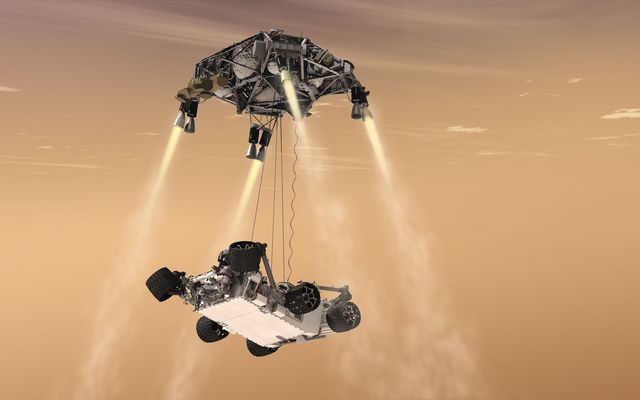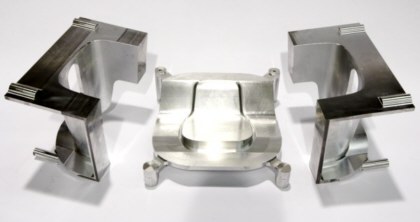 In recent years, the use of private and business aircraft has increased significantly, thanks in no small part to advances in instrumentation in the general aviation sector. United Kingdom-based Meggitt Avionics, is at the forefront of this activity and specializes in the design and manufacture of innovative solid state displays, sensors, and systems for measuring, processing, and displaying altitude, attitude, airspeed, navigation, and engine parameters. Customers include Pilatus of Switzerland, the New Piper Aircraft Company, Cessna, Boeing, and the U.K. and U.S. armed forces.
In recent years, the use of private and business aircraft has increased significantly, thanks in no small part to advances in instrumentation in the general aviation sector. United Kingdom-based Meggitt Avionics, is at the forefront of this activity and specializes in the design and manufacture of innovative solid state displays, sensors, and systems for measuring, processing, and displaying altitude, attitude, airspeed, navigation, and engine parameters. Customers include Pilatus of Switzerland, the New Piper Aircraft Company, Cessna, Boeing, and the U.K. and U.S. armed forces.
Meggitt Avionics is part of Meggitt plc, which made £384 million in fiscal 2000 and employs nearly 3,500 people worldwide. Meggitt Avionics is using an Autodesk Inventor® 3D solution to help in the design and manufacture of its new generation of instruments.
The Quality Challenge
The design of aircraft instruments involves the very dense packaging of electronic components and subassemblies into an enclosure that has severe space constraints imposed by the aircraft designers. This is a harsh environment. Operational temperatures behind the instrument panel can reach 85°C while the temperature inside the instrument itself can be significantly higher. Better reliability means saving money through fewer changes late in the design cycle, reduced spare inventory on hand, and better customer retention.
3D Becomes Essential
Although 2D drafting software has been used at Meggitt Avionics since 1991, its capabilities were coming under pressure as the pace of product development increased. A move to 3D for mechanical design would shorten timescales only a little because time-to-market is constrained by electronics and software lead times. However, it would give the design team the ability to explore multiple design options quickly and easily. Meggitt began using AutoCAD® software in 1997.
“When we were putting together the first Air Data Attitude Heading Reference System (ADAHRS), designed in 2D, it didn’t quite fit. Holes were not lining up, and pillar positions were wrong,” says Kevin Brydon, Design Services engineering manager at Meggitt. “We also had a physical clash between the case and an electronic component that necessitated rework on the circuit board. It was these problems that convinced the company to make the move to 3D that I championed.”
Brydon wanted the whole design team to visualize and design in 3D and to share in the benefits. The ultimate objective was the creation of a virtual prototype.
“There were other competitive systems to look at. However, we saw the way that Autodesk was progressing with Autodek Inventor and we had every confidence that it would continue,” notes Brydon. “Autodesk Inventor was the most functional and economical solution. We had an upgrade path, too.”
Autodesk Inventor—the Model Solution
 “The design team is over the moon with Autodesk Inventor,” adds Brydon. “We have a wide range of users from apprentices to old hands. They have all adopted it. People with experience in high-end systems say it is great. It’s easy to use and capable. Everyone feels comfortable with its way of working.”
“The design team is over the moon with Autodesk Inventor,” adds Brydon. “We have a wide range of users from apprentices to old hands. They have all adopted it. People with experience in high-end systems say it is great. It’s easy to use and capable. Everyone feels comfortable with its way of working.”
All the design checking and analysis is done at the client proposal stage. This means that the proposal is a very accurate reflection of what the customer will get.
“With Autodesk Inventor, we design problems out. Previously we would have had to engineer them out,” says Brydon. “The animation capabilities of Autodesk Inventor are enabling us to give impressive presentations to other Meggitt staff and to customers. We also use the AVIs generated from Autodesk Inventor files to review the design for assembly with our Production Engineers.”
Matthew Davis, Meggitt Design Technician, has considerable experience with other 3D systems, including one of the best-regarded high-end parametric modeling systems. “Just one day on the basics of Autodesk Inventor and I was up and running. At my previous company the 3D system was a disaster,” recalls Davis. “Far too complex. It took three weeks of training to get to the same level that I achieved in one day with Autodesk Inventor.”
Where Next for Meggitt Avionics?
Getting even more out of the investment in Autodesk Inventor is a top priority for Meggitt designers. That’s why the subscription program is so important to the company. Frequent new releases of Autodesk Inventor are expected to provide valuable additional functionality.
“We intend to use Autodesk Inventor to enable the earlier design of production tooling and test rigs for the production of subassemblies,” says Brydon. “We are also looking at using Autodesk Inventor to generate animated assembly instructions, complete with soundtrack, for use in production.”
Meggit will also encourage its suppliers to use the Autodesk Inventor models rather than drawings when relevant, for instance, to generate “perfect fit” transportation packaging. Designers at Meggett can also offer Autodesk Inventor models to customers for better verification of the proposed installation.
“This is a significant investment that proved to be well worth it as we get closer and closer to true virtual prototyping. We could not have had better support from Meggitt plc. And, thanks to Autodesk Inventor, we can deliver,” concludes Brydon.








